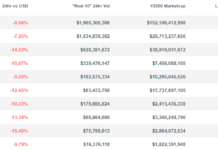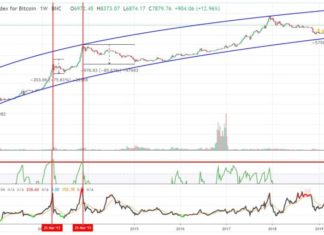[ad_1]
Ten years ago on Oct. 31, pioneer cryptocurrency Bitcoin was introduced to the world after pseudonymous creator Satoshi Nakamoto sent its whitepaper to a private mailing list of cryptographers. A decade later, the initially envisioned landscape has spawned into a multibillion-dollar sector, rivaling the traditional finance sector.
Humble Beginnings
The first bitcoins were transacted privately among a group of individuals who assigned it no value. However, one of the earliest known transactions was for two pizzas in May 2010, when developer Laszlo Hanyecz offered 10,000 BTC, about $30 at the time, for his order on a BitcoinTalk forum.
The currency was worth a few cents for much of its initial years, with “dollar parity,” or reaching a value of $1 per unit, achieved in February 2011. Soon after, bitcoin reached parity with the Euro and the British Pound, and with the increase in price, became a subject of discussion in mainstream media.
The hype saw bitcoin prices reach $31 in mid-2011, after which it suffered its first “bubble” burst in June 2011 as prices tumbled down to a modest $10. The year also saw the increasing relevance of Mt.Gox, the world’s largest Bitcoin exchange at the time, and the emergence of the Czech Republic-based mining pool, Slushpool.
With an increase in use-cases, dark web marketplace Silk Road rose to infamy as drug cartels, ammunition providers, and mid-sized retail entrepreneurs participated in a market free of jurisdiction and control; powered by the robustness and anonymity of bitcoin.
Over the years, Bitcoin experienced increased price volatility and tremendous media attention as banks, venture capitals, and retail investors turned to the asset class to make a quick buck. The currency crossed the $1,000 mark in April 2013, at the same time when payments processor BitPay reported 10,000 transactions per month – both events signaling an increase in interest for the currency. Meanwhile, competitor BitInstant revealed it processed approximately 30 percent of the world’s Bitcoin transactions, facilitating 30,000 transfers in April 2013 alone.
2015 Onwards
In February 2015, the number of merchants accepting bitcoin exceeded 100,000. In October 2015, a proposal was submitted to the Unicode Consortium to add a code point for the bitcoin symbol. The year also saw the launch of Ethereum, which since gave rise to a thriving crypto-finance industry built on the back of smart contracts, DAOs, ICOs, and eventually, Bitcoin-related business.
In January 2016, the network rate exceeded one exahash/sec. In July 2016, researchers published a paper showing that by November 2013 bitcoin commerce was no longer driven by “crooked” activities but instead by legitimate enterprises. Meanwhile, ride-hailing giant Uber switched to Bitcoin in Argentina after the government blocked credit card companies from dealing with the company.
In March 2017, the number of GitHub projects related to bitcoin passed 10,000. Exchange trading volumes continue to increase. Between January and May 2017, Poloniex saw an increase of more than 600 percent active traders online and regularly processed 640 percent more transactions. Starting September 2017, Bitcoin experienced a massive increase in prices as speculations around the cryptocurrency gained momentum. It touched $20,000 on some exchanges in January 2018, after which the currency’s second “bubble” seemed to have burst.
While prices continue to endure volatility, increased visibility of the sector in both institutional and regulatory places mean a giant price move is certainly incoming – with the only unknown being its direction.
Cover Photo by Fred Heap on Unsplash
Disclaimer: Our writers’ opinions are solely their own and do not reflect the opinion of CryptoSlate. None of the information you read on CryptoSlate should be taken as investment advice, nor does CryptoSlate endorse any project that may be mentioned or linked to in this article. Buying and trading cryptocurrencies should be considered a high-risk activity. Please do your own due diligence before taking any action related to content within this article. Finally, CryptoSlate takes no responsibility should you lose money trading cryptocurrencies.
Did you like this article? Join us.
Get blockchain news and crypto insights.
http://platform.twitter.com/widgets.js
[ad_2]
Source link





